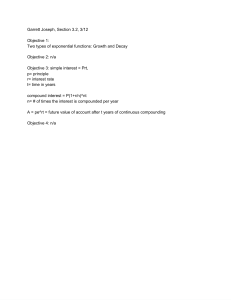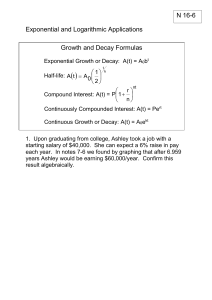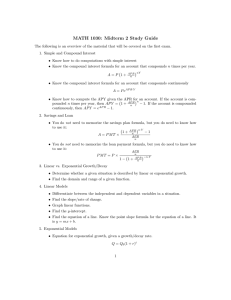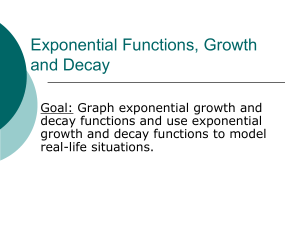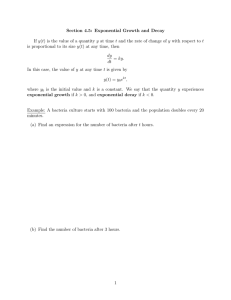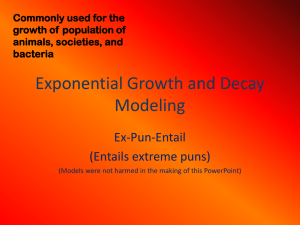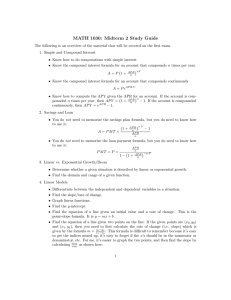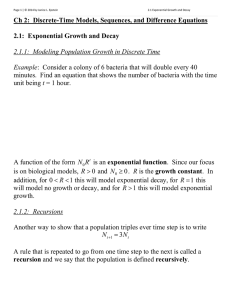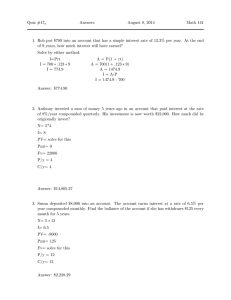b = x
advertisement
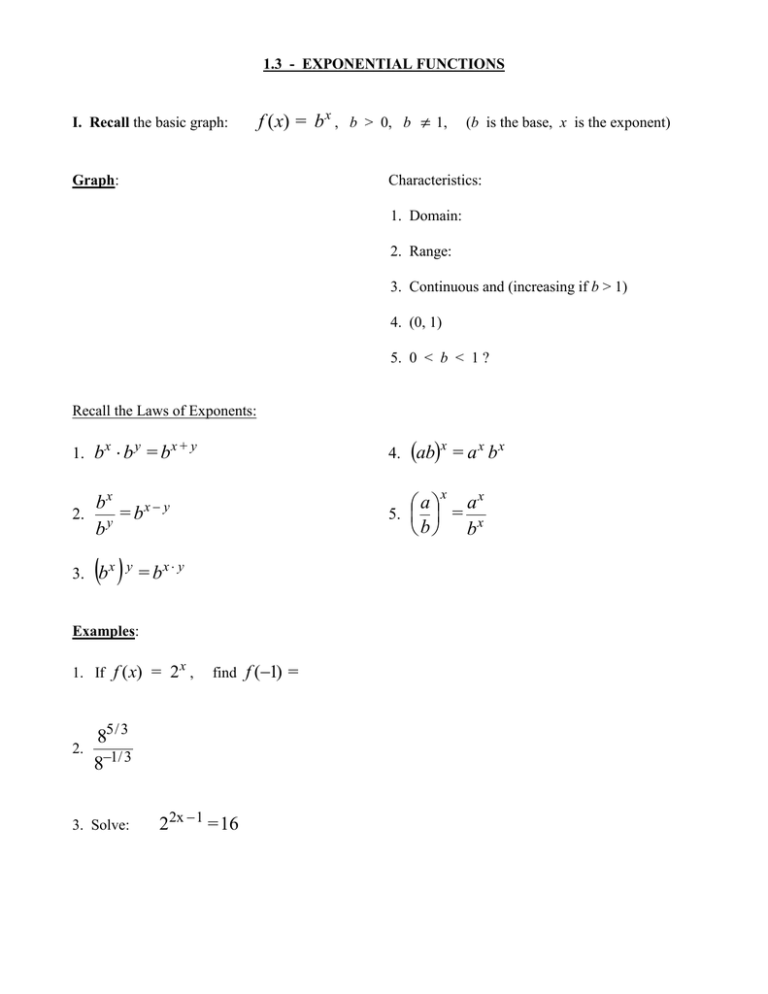
1.3 - EXPONENTIAL FUNCTIONS I. Recall the basic graph: f ( x) = b x , Graph: b > 0, b 1, (b is the base, x is the exponent) Characteristics: 1. Domain: 2. Range: 3. Continuous and (increasing if b > 1) 4. (0, 1) 5. 0 < b < 1 ? Recall the Laws of Exponents: 1. b x b y = b x + y 4. ab = a x b x bx 2. y = b x y b a ax 5. = x b b x x 3. b x y = b x y Examples: 1. If f ( x) = 2 x , 2. find f (1) = 85 / 3 81/ 3 3. Solve: 22x 1 = 16 In general: f ( x) = A b x where A is the y-intercept. Example: Base e: APPLICATIONS: II. Growth and Decay y = c ek t k > 0 growth and k < 0 decay Exponential Growth - Populations grow exponentially. The national debt grows exponentially. Example: Bacteria grows at a rate of 1.386. Initially, there are 25 bacteria in the population. How many bacteria will there be in 3.5 hours? (b) If we began with 55 bacteria, how many bacteria would there be in 45 minutes? Exponential Decay - radioactive decay and carbon 14 dating Example: Carbon 14 decays at a rate of 0.000124. If 500 mg of carbon 14 is present in a sample of tissue now, how much will be present in 45,000 years? III. COMPOUND INTEREST - An application of the exponential function to business. Simple Interest - interest computed only on the original principal P I = Prt P - principal (amount of original investment) r - interest rate t - number of years invested Let A be the accumulated amount. Then A = P+ I = P+ Prt = P (1 + rt) simple interest formula Earning interest on interest is called compound interest where r A = P 1 + m Example: mt and m = number of conversion periods per year. If $1,000 is invested at 10% monthly, how much will be in the account in 10 years? Redo on the Calculator using the TVM Solver: P - principal, also called present value A - accumulated amount, also called future value N I P/Y PV C/Y PMT FV PMT: Example: How much money did I invest if the future value of my account is $6,340.00 at the end of 2 years compounded daily at 4%? N = FV = I = P/Y = PV = C/Y = PMT = Effective Rate – Eff(r,m) Bank A offers a nominal rate of 7.1% semiannually Bank B offers a nominal rate of 7.0% daily Which bank should I choose? Continuous Compound Interest: y = P er t Example: How much money will there be in an account in 4 years that started with $500.00 and earns 3% interest compounded continuously? A question we would like to answer, but can't yet: interest%? How long will it take money to double at 2.5% Leads us to the next section. HW 1.3 # 9 - 15 (odd), 25 - 37 (odd), 47, 49, 55,61, 72,77
